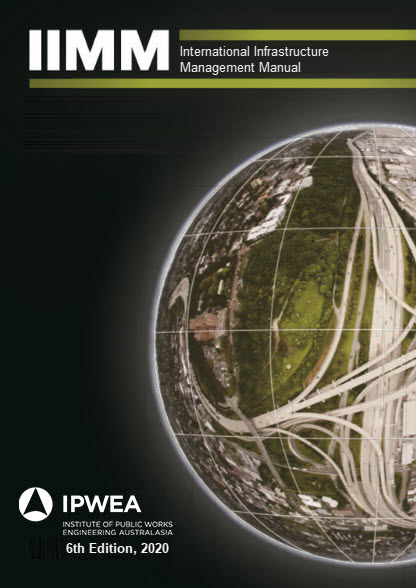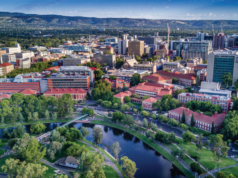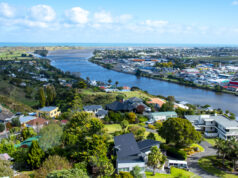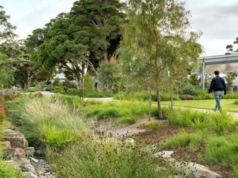Climate change experts agree, the fight to save our world from environmental catastrophe starts in our cities. Cities consume more than two-thirds of the world’s energy and account for more than 70 per cent of global CO2 emissions.
According to the Global Alliance for Buildings and Construction 2018 Global Status Report, the manufacture of materials such as steel, concrete, aluminium and glass accounts for 11 per cent of CO2 emissions.
“Building and construction has a big carbon emissions footprint, especially the production of materials such as concrete,” says IPWEA’s Director of Sustainability, Dr Jacqueline Balston. “There are significant opportunities to reduce the carbon footprint of the building materials used in the construction of public infrastructure, commercial and residential buildings.”

Sustainable building materials have flooded the market in recent years and are now readily available to builders. ‘Green’ cement, named because its carbon footprint is significantly lower than traditional concrete (as low as one-fifth, in some cases) is a good option for infrastructure. Other low carbon footprint materials – bamboo, wood fibre, rice straw, recycled aluminium and even recycled plastic cladding – provide considerable cost and energy-efficiency advantages over commonly used materials.
Minimising ongoing carbon emissions
“We have a climate change global imperative to reach zero emissions by 2050, so it’s essential we reduce the ongoing carbon emissions from maintaining and operating infrastructure,” says Balston.

She says energy-efficient design in everything from buildings to street lighting is crucial to ensure CO2 emissions targets are reached. Designs that take into consideration the position of buildings in streetscapes as well as internal and external components to heat and cool buildings without the need for fossil fuels is especially important, since the energy expenditure required for heating and cooling is one of the largest sources of ongoing CO2 emissions in a poorly designed building.
“For example, a ‘solar passive’ designed building – be it an office block, house or building – would point in the right direction and have the right awnings, coverings, shadings and heat sinks within it so that it doesn’t require any additional heating or cooling,” she explains.
Smart water infrastructure
The design of infrastructure should also encapsulate smart water technologies and water-sensitive urban design, including water recapture and reuse, permeable surfaces, swales, tanks, low-flow fittings and green roofs. “Water is an increasingly scarce resource,” says Balston, “and over the past 20 years there’s been a lot of research done about how we can better capture and reuse it.”
She points to water-wise innovations in Rotterdam and Adelaide as examples of cities leading the way in smart water usage. “In Rotterdam, underground city water storages, investments in water catchment systems and large-scale water reuse meant the city ranked No.1 in the Sustainable Cities Water Index in 2016,” says Balston.
“In Adelaide, more than 20 gigalitres of stormwater is harvested every year from roads and channelled into kerb-side sinks, constructed wetlands and other filtration systems that then direct the water into underground aquafers. This is pumped out again to provide water for irrigation systems that service parks, agriculture and sportsgrounds, as well as industrial, commercial and residential customers.”
Green infrastructure enhances liveability

Incorporating greener infrastructure into the design of public spaces – including parks, gardens, street trees, green buildings, rooftops, native plantings, vegetated sidings and urban food forests – can significantly enhance city liveability. Urban vegetation provides shade, reduces solar radiation, absorbs pollution, improves air quality, reduces flooding and sequesters carbon all at the same time.
“Green cities are more enjoyable to live in and have a reduced heat-island effect compared to areas dominated by hard infrastructure – a significant benefit as the climate warms up,” says Balston. “Research also shows people need interaction with nature for a healthy, well-balanced state of mind and general well-being.”
The designation of London as the world’s first national park city in 2019, based on its 40 per cent public green space, is a global example of how our cities can be transformed.
Find out more

The IPWEA Practice Note 12.1, “Climate change impacts on the useful life of infrastructure”, is a great starting point for asset managers wanting to include the dimensions of climate change into sustainable and resilient climate change planning. Copies are available from the IPWEA website.

The latest edition of the IPWEA International Infrastructure Management Manual – now available online – includes expanded and updated sections on climate change risk and resilience, with new case studies. It also features a discussion box on the carbon-neutral imperative for infrastructure.














